
textiles from portland maine
everything made by hand in a boiling loft space
commissions / client work / hate mail: 228printers(at)gmail(dot)com

textiles from portland maine
everything made by hand in a boiling loft space
commissions / client work / hate mail: 228printers(at)gmail(dot)com

hand-dyed shirt with all-over 228 print
area man printed in white in center of shirt
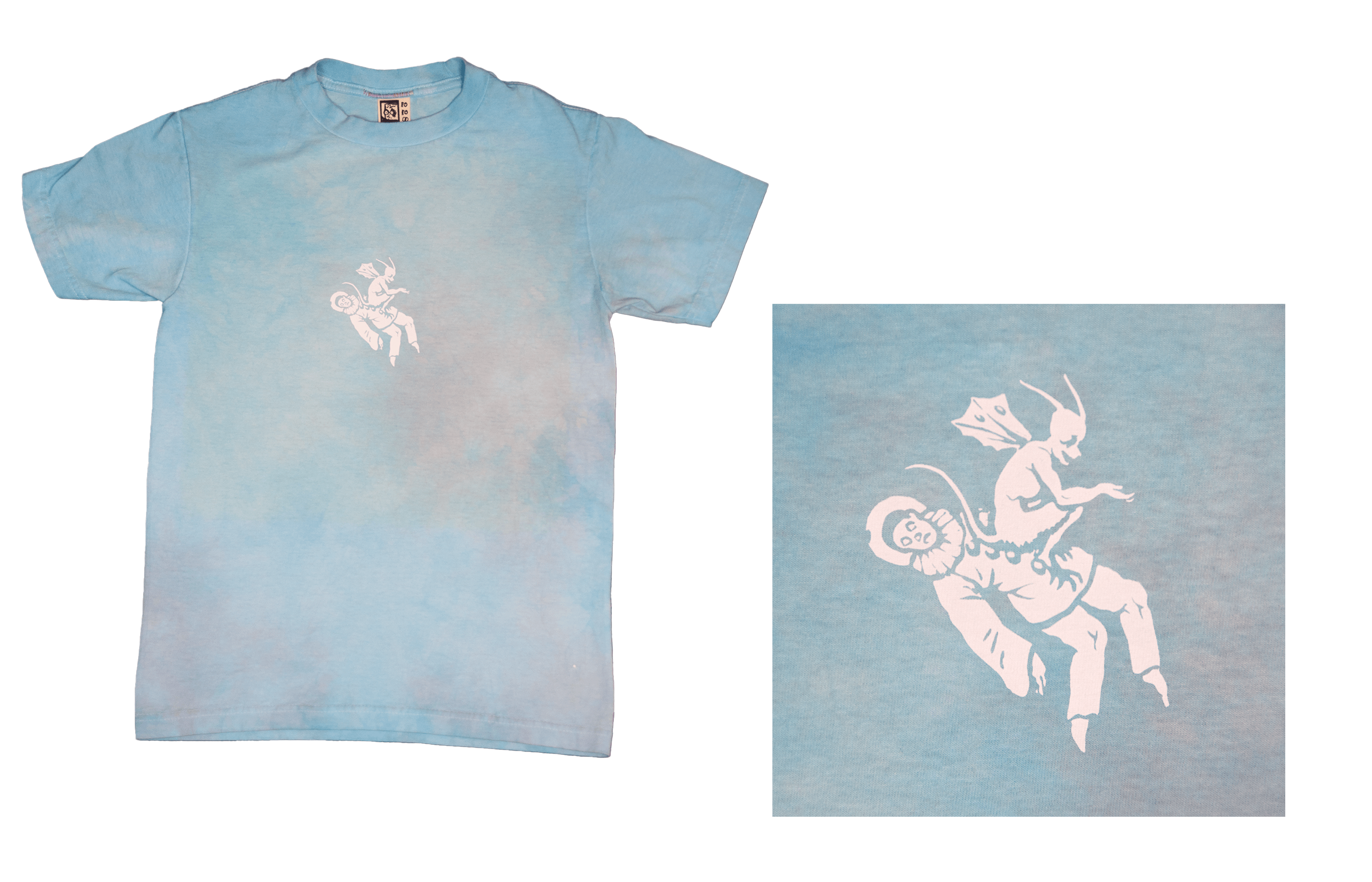
hand-dyed shirt designed to look like a cloudy blue sky at sunset
sleep paralysis demon design in the middle of the shirt, floating in thin air
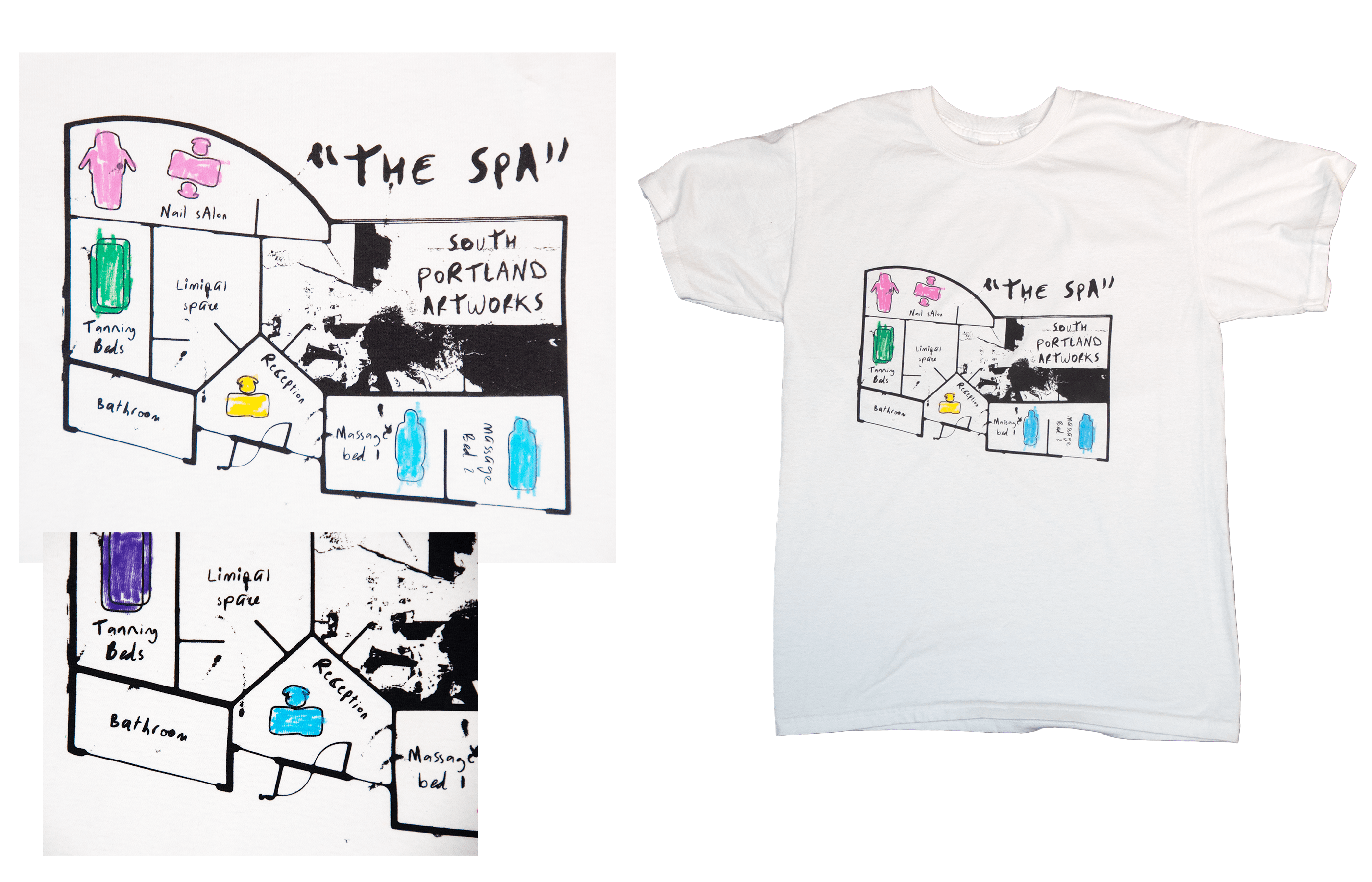
merch design made for south portland artworks, where my studio space is located
"SPA" floorplan
elements hand-colored using posca fabric markers
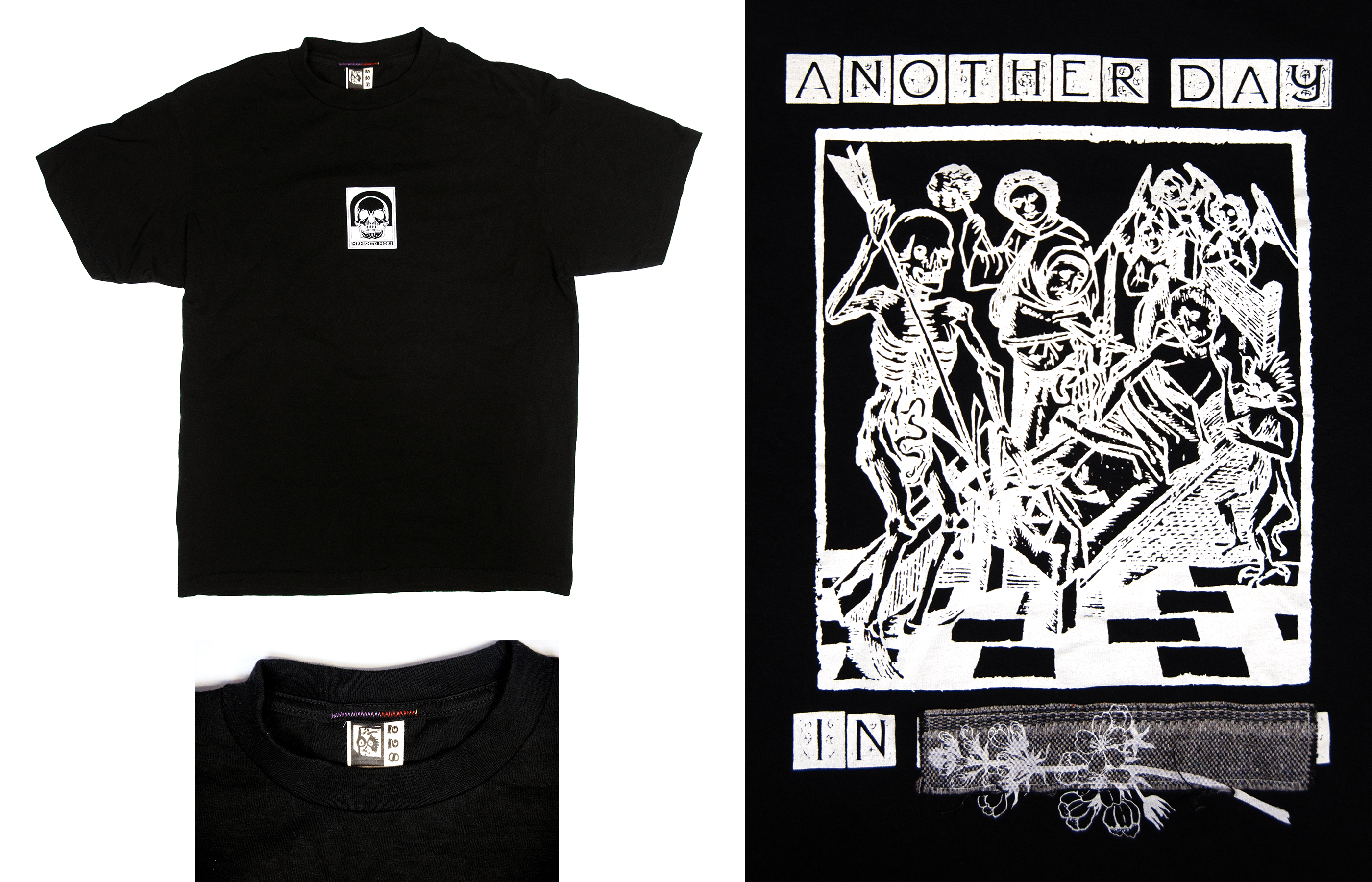
memento mori skull print on front, custom 228 tag inserted
"another day in ------" on back; "paradise" sewn over with a reclaimed wool patch
flower printed on top of patch
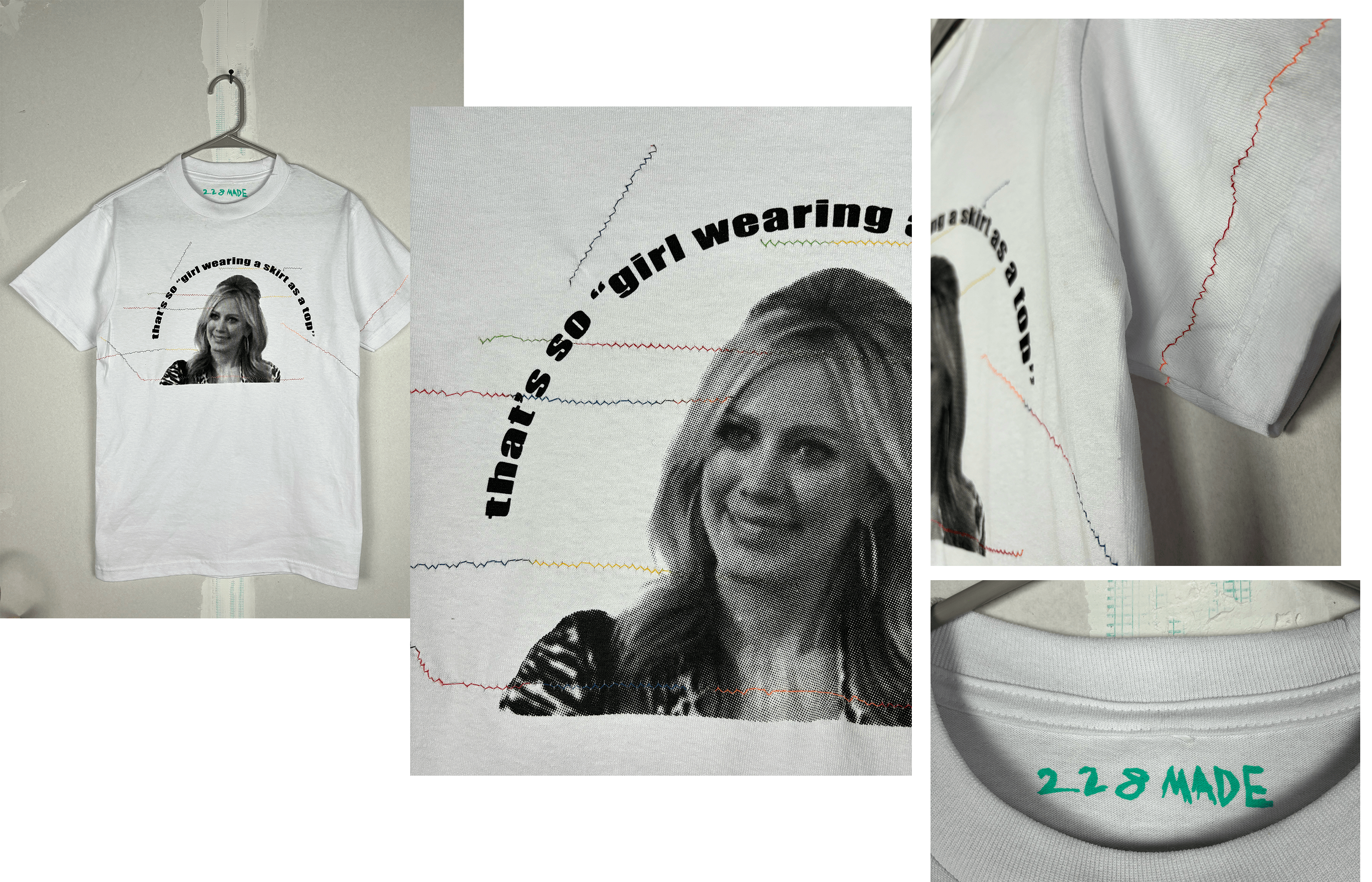
one-of-one commission piece for pride
features a still & a quote from 2008 hilary duff anti-bullying PSA
rainbow thread interspersed throughout shirt
"228 made" print in glow-in-the-dark ink on inside collar

"vacation city" sea monsters print on back
portland maine print on front
both front and back printed through one screen with hand-mixed color gradients
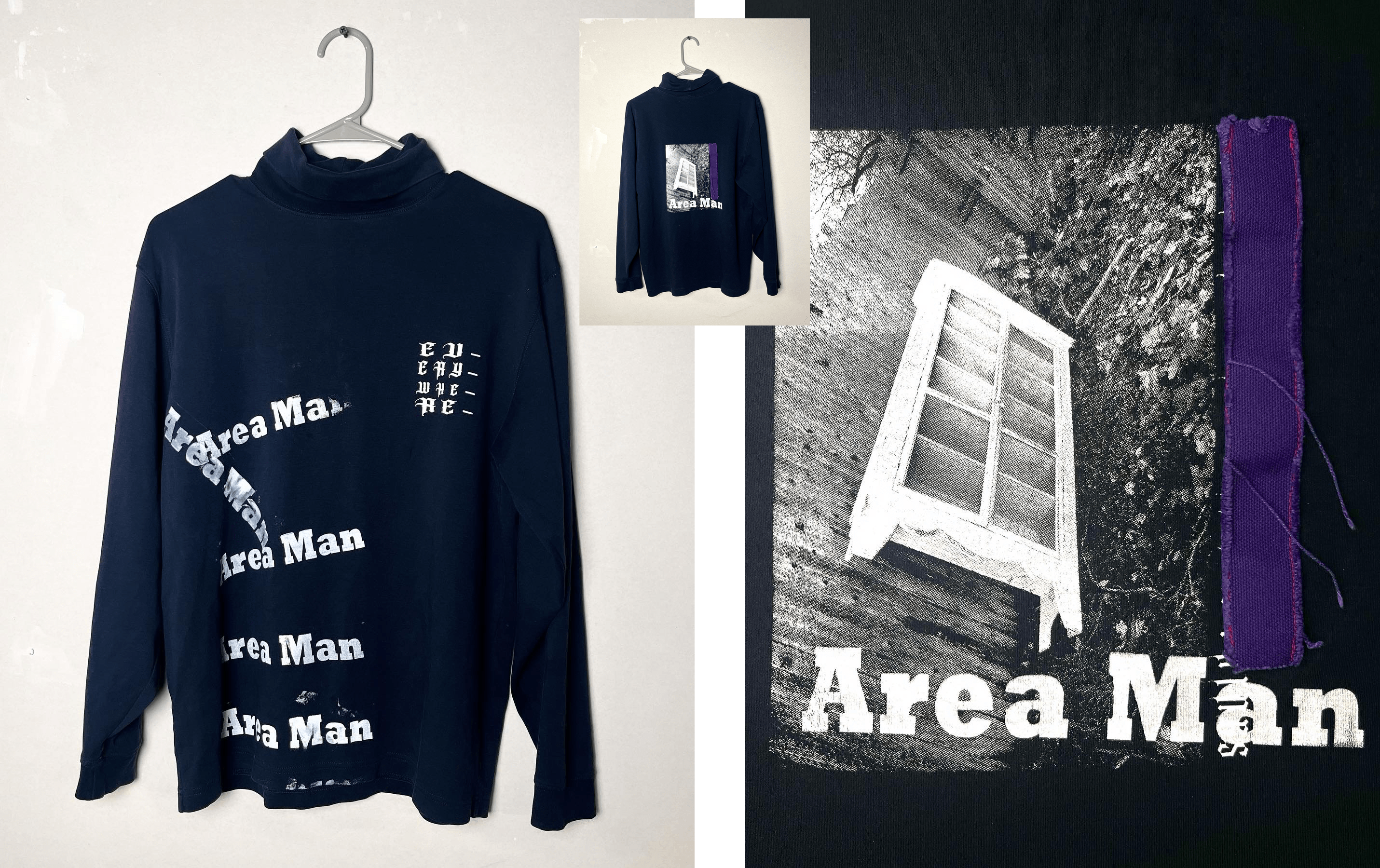
thrifted turtleneck
area man / "everywhere" prints on front
halftone cabinet photo on back, caption covered with sewn-on duck canvas
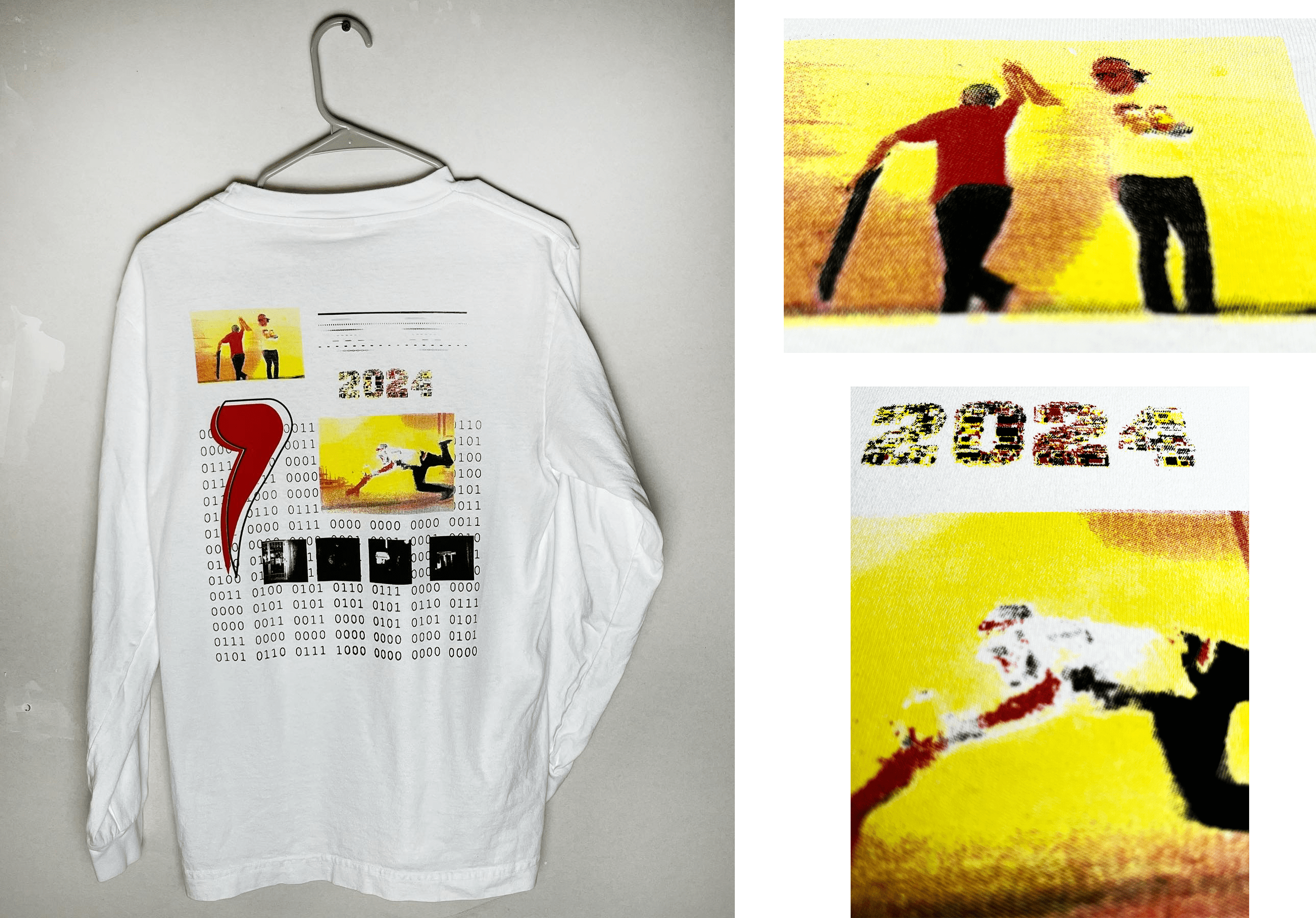
three-color print memorializing garrett hill's infamous coffee run
printed on everybody.world long sleeve trash tee
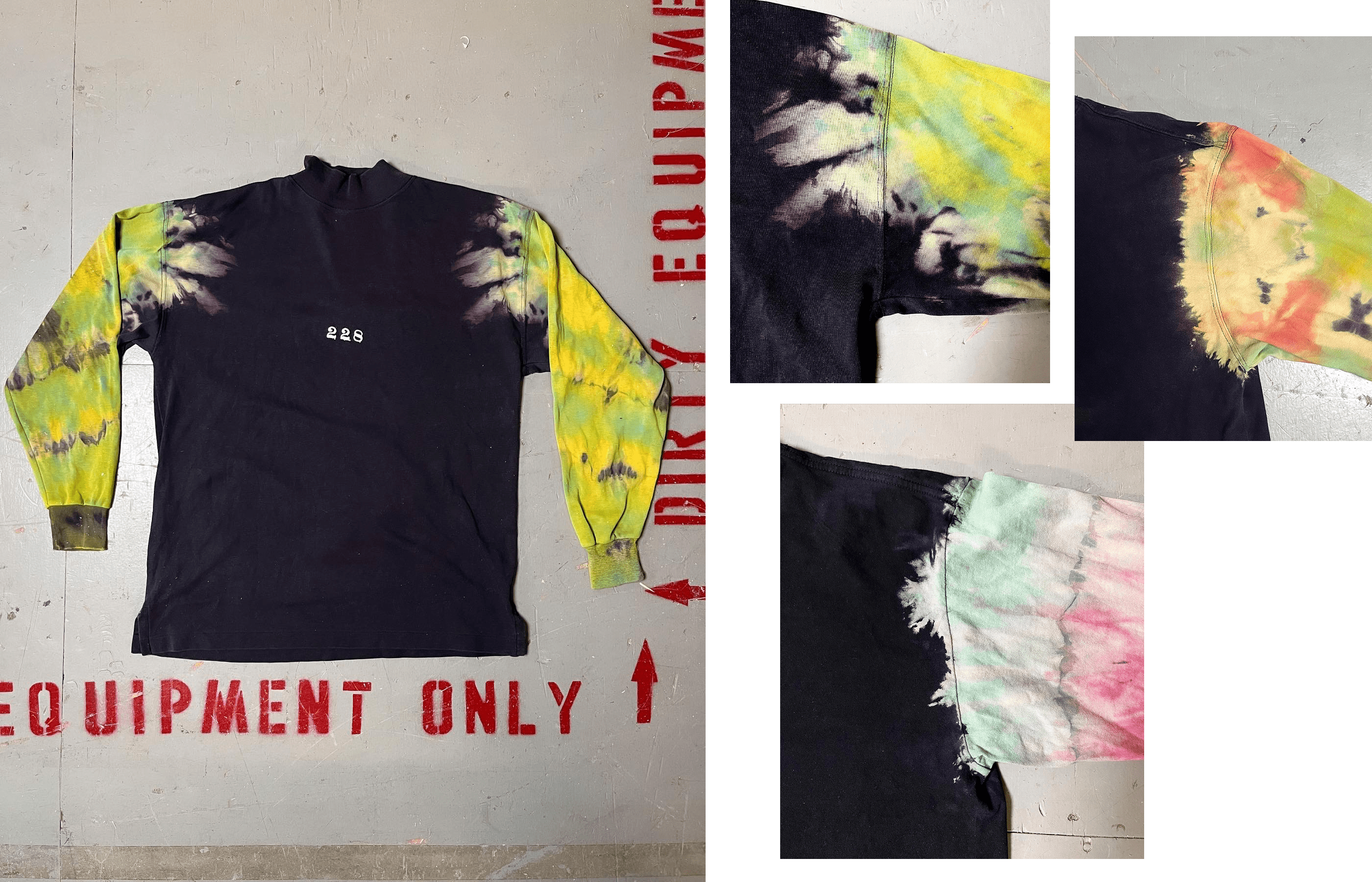
thrifted long sleeve shirts
reverse tie-dyed arms with screen printed 228 branding on front
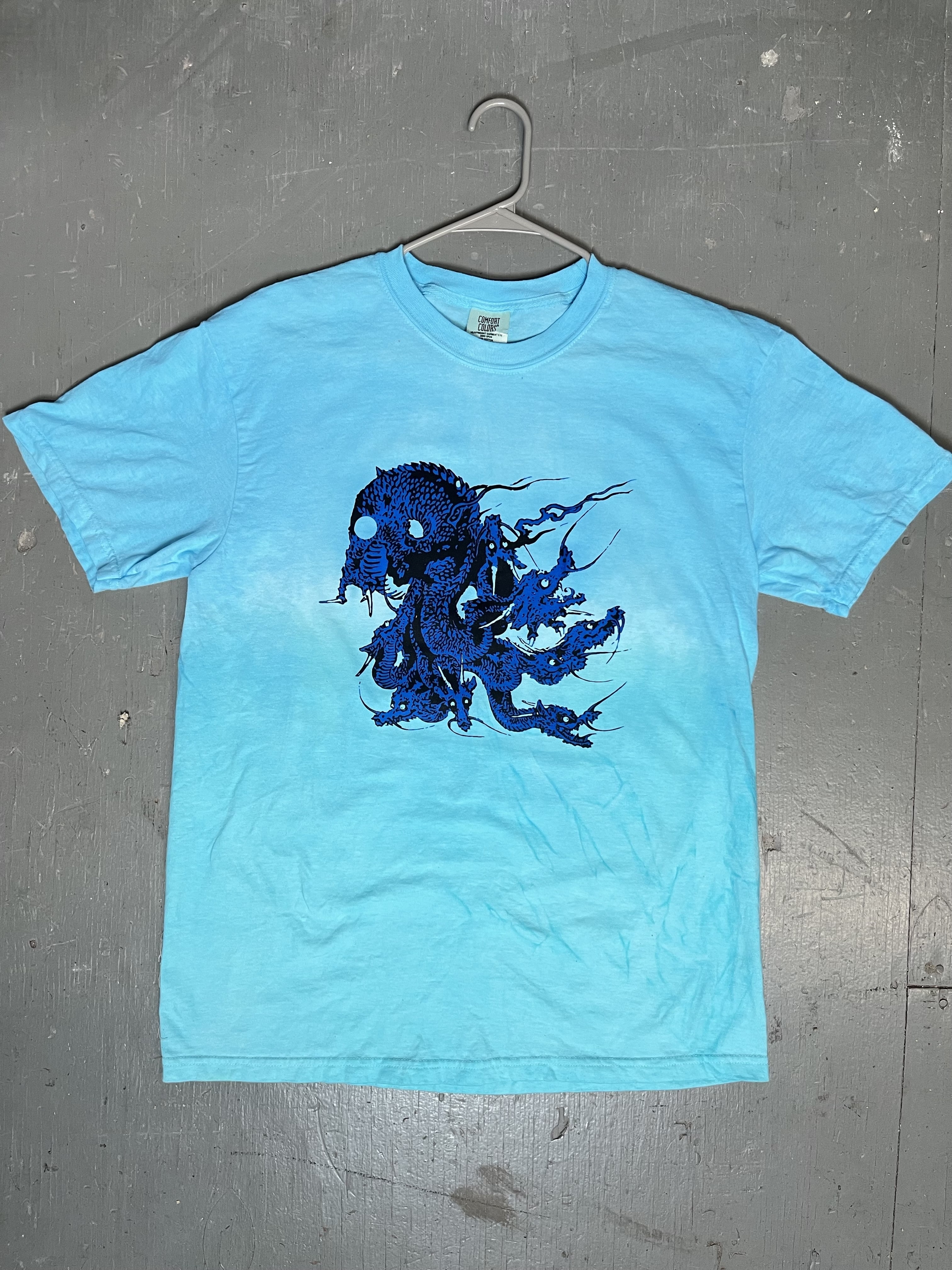
ombré dyed factory reject comfort colors 1717 cotton tee
eight-headed dragon print, image found in 19th century manuscript
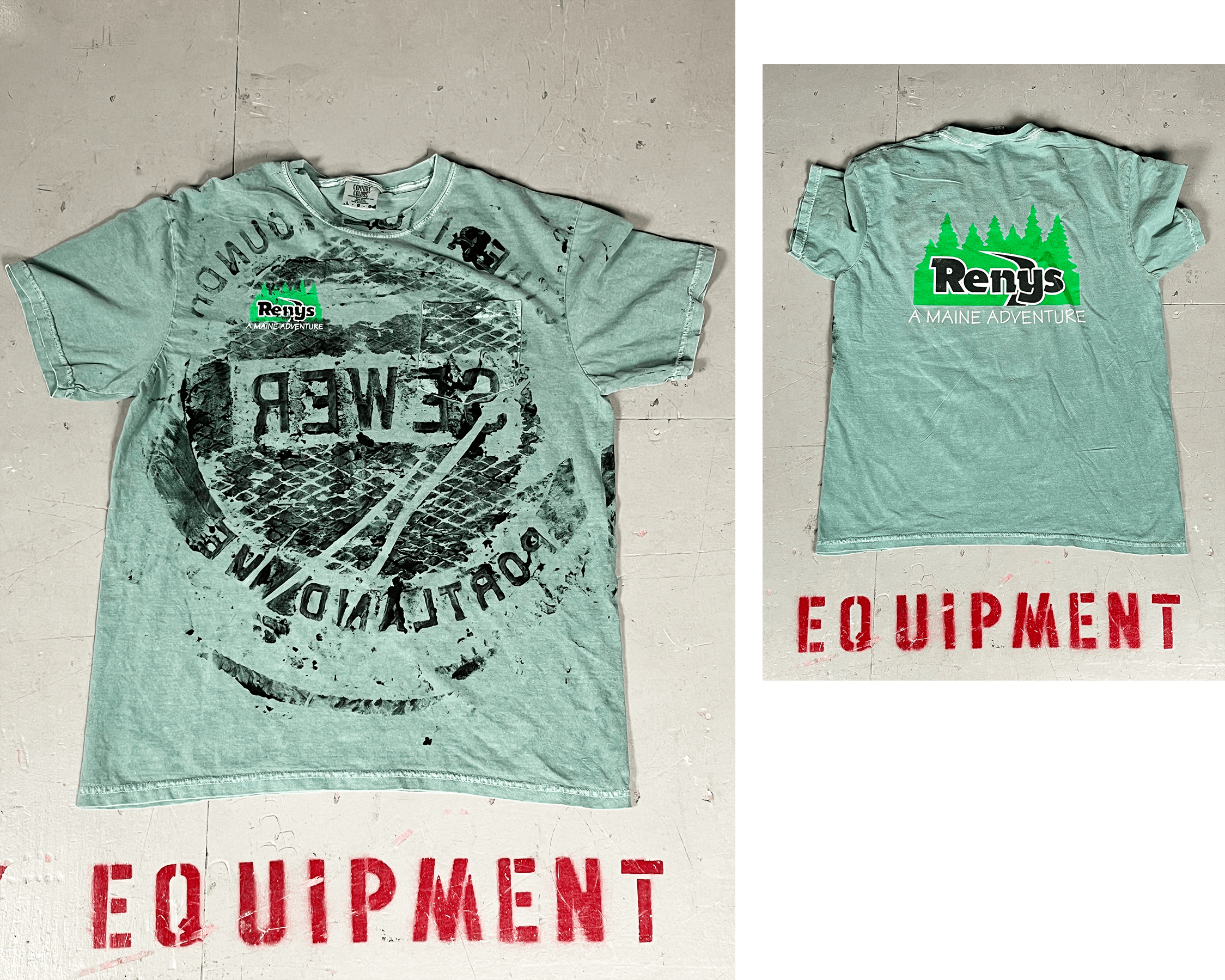
reny's "a maine adventure" short sleeve comfort colors tee
portland sewer cap used as printing plate
rolled on ink, put shirt over sewer, jumped on shirt to complete impression
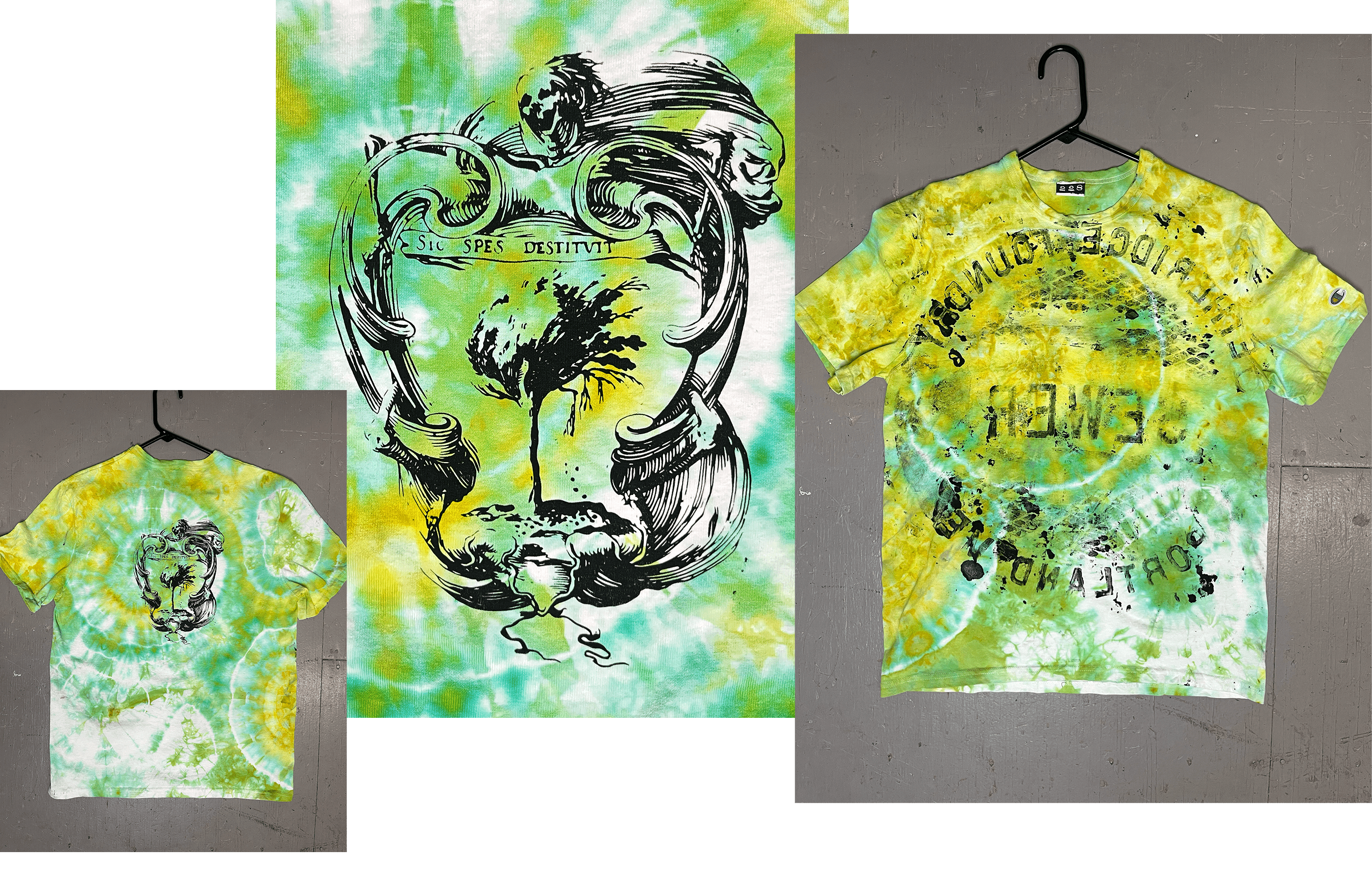
geode dyed cotton champion tee
portland sewer cap impression on front
"sic spes destitvit" ("so hope ceased") print on back
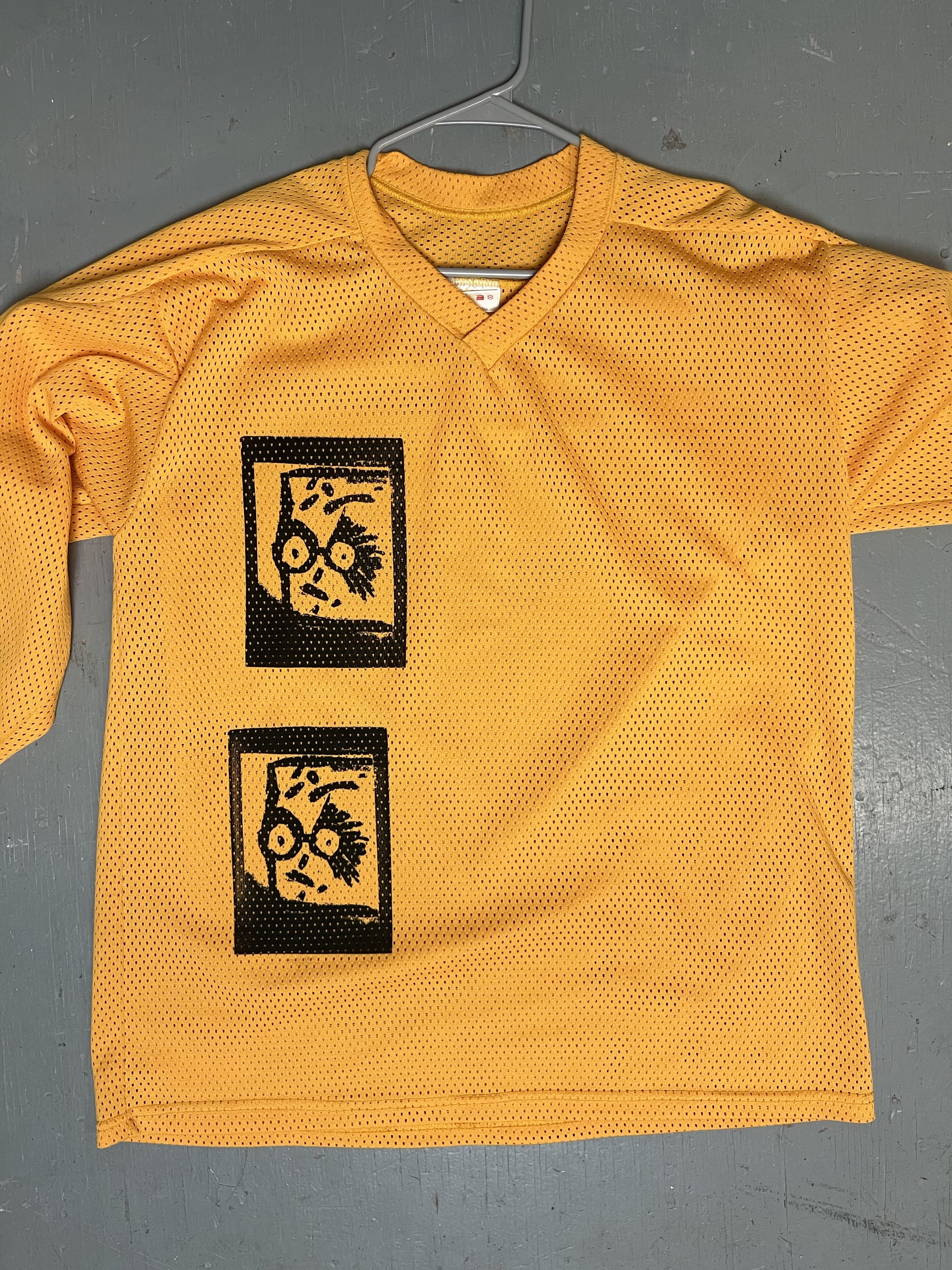
thrifted vintage hockey jersey
"area man" caricature prints on front
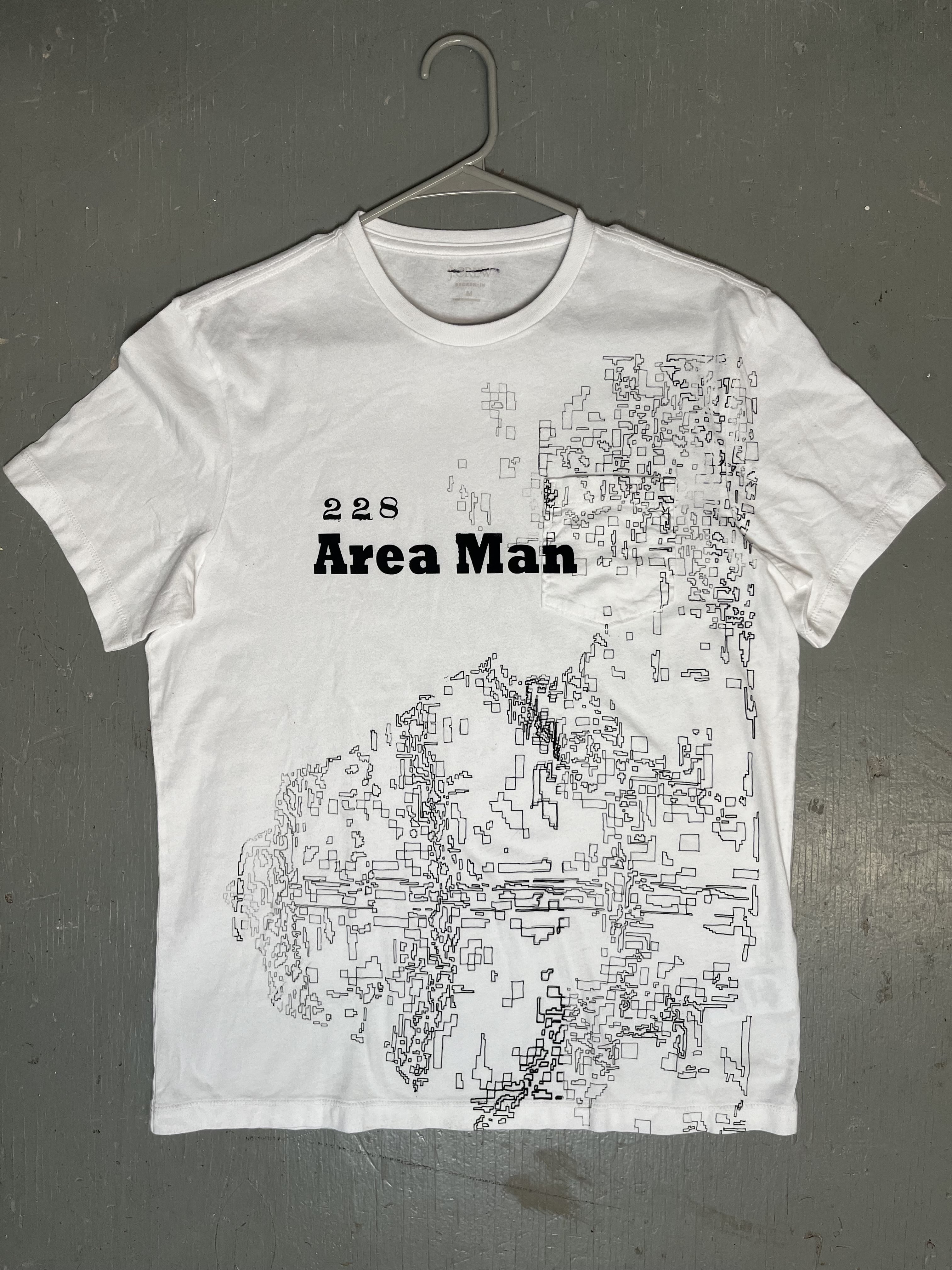
factory reject j. crew cotton tee
228 / area man branding
background print from found screen, c. 2008
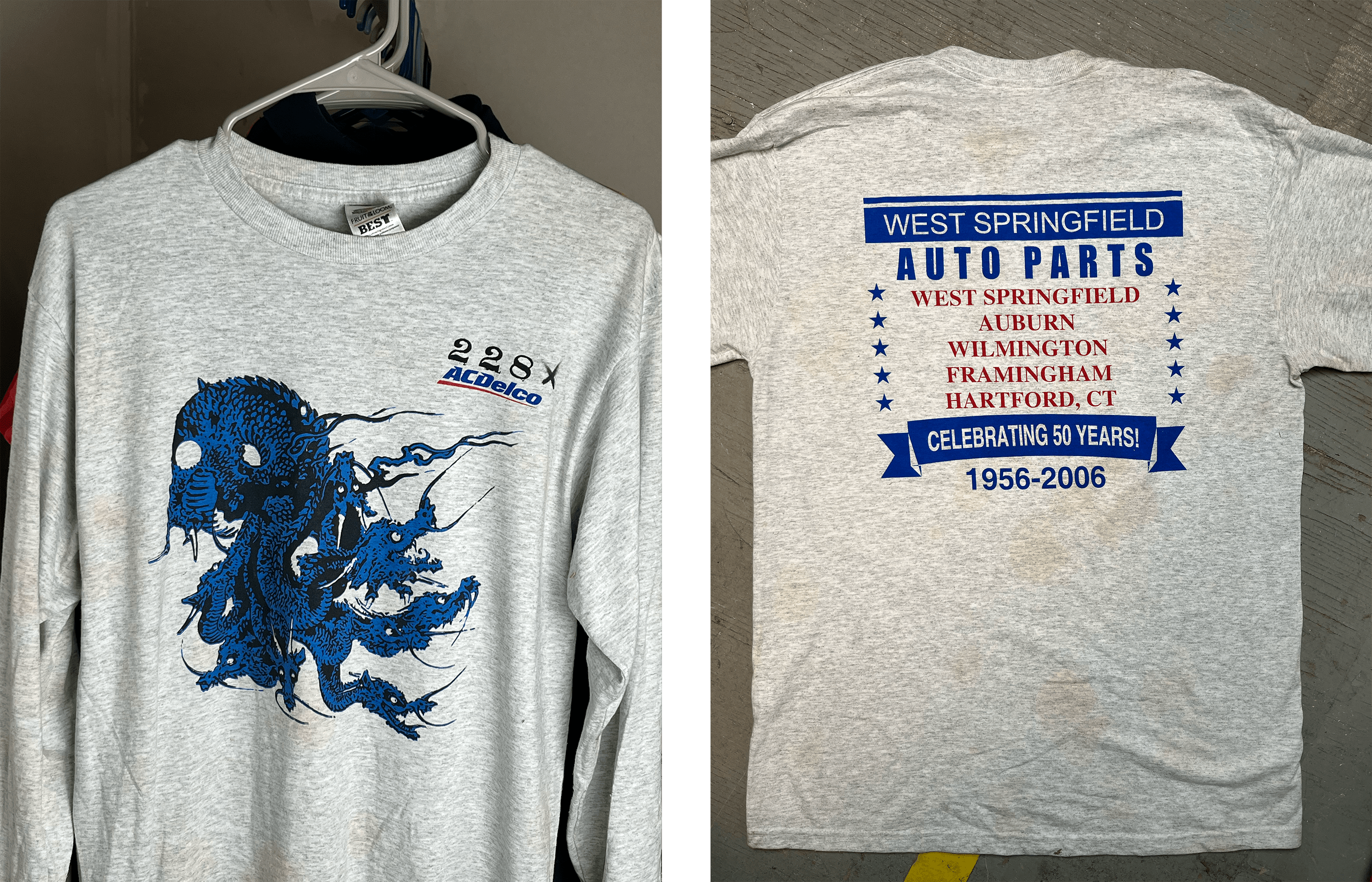
$1 marden's ac delco shirts, possible chemical staining during production
228 x acdelco collab ft. eight-headed dragon print
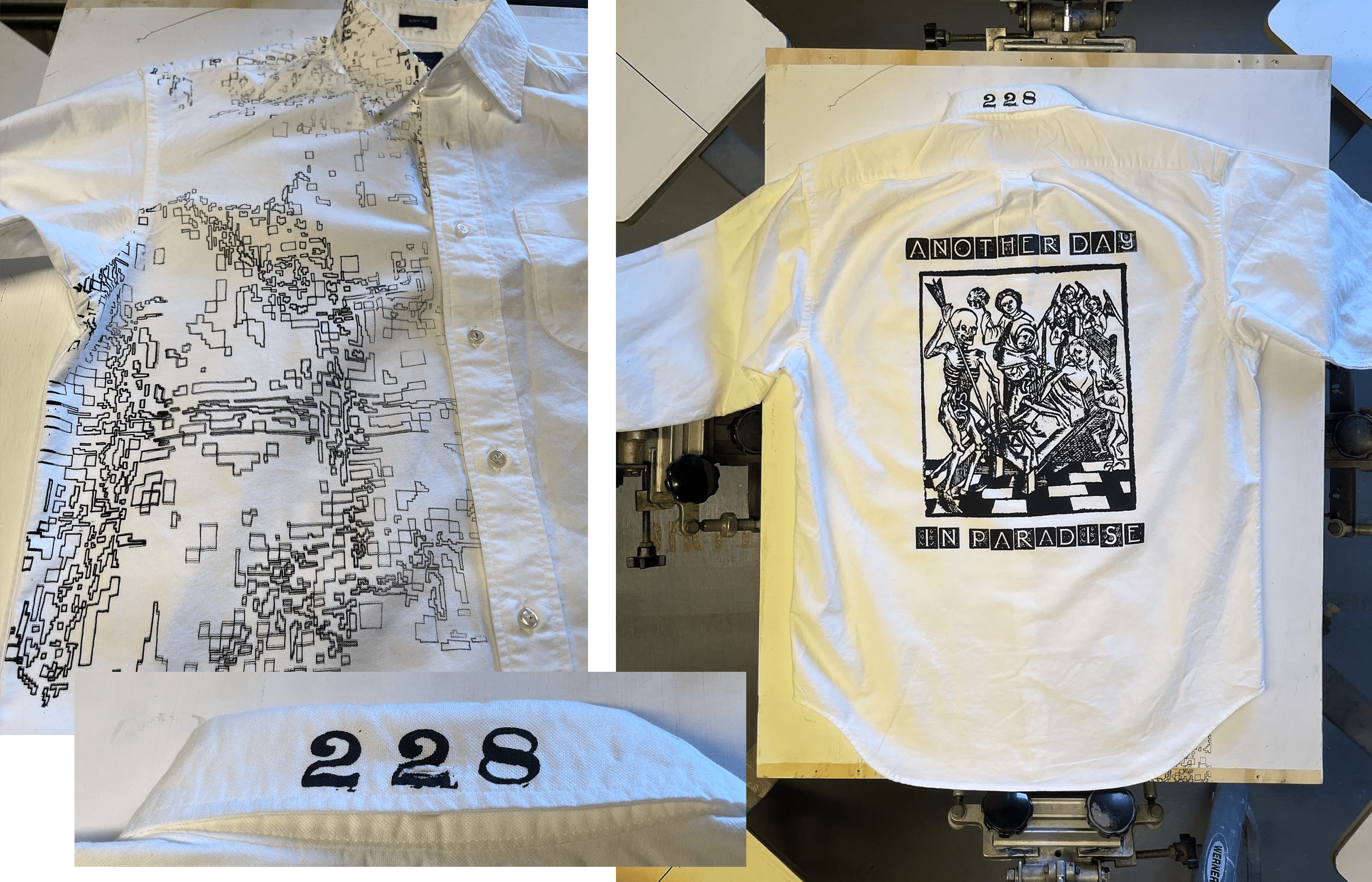
overstock j. crew heavyweight cotton dress shirt
"another day in paradise" scene print on back, 228 branding on back of collar
found pattern on half of front